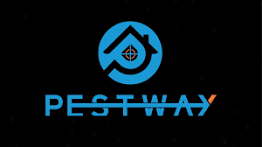
Does it sound like there’s a party in your attic? Scampering or scuttling noises are certain indications of rodents or other animals up there. Prior to any actions required to fix the scenario, you must first identify what you’re up against. It may be a good idea to have raccoon removal Ann Arbor check on those scuttling noises. You’d marvel at the number of times a professional or plumber is paid to come out for a check when in fact it’s a wildlife removal professional that is required. It will save you time and money getting it right the very first time around.
Thumping
Contents
If you hear thumping in your attic at night, it’s most likely a bigger animal, such as a raccoon or opossum, jumping from one area of the attic to another, actively pushing or damaging something, or dragging something heavy.
Scratching

Most animals scratch in the attic, to clear out an area for nesting, or perhaps to bury food. Raccoons, rats, mice, and squirrels all scratch. You’re probably dealing with a nighttime animal since you hear sounds in the evening, so it might not be a squirrel. The size of the animal is hard to tell – numerous factors affect the volume of the noise. A little mouse scratching straight on the sheetrock right above your head in a peaceful home will sound louder than a huge raccoon scratching a wood beam somewhere in the attic, in a home with a great deal of background noise.
Rolling ball noises
Likely squirrels or rats rolling nuts.
Singing sounds
Most most likely raccoon. Rats, mice, opossums, and squirrels don’t make singing sounds in the attic. This is an excellent hint that you’ve got a raccoon or a family of raccoons.
Separating Between Animal and Household Noises
There are only two alternatives as to what the source of the scratching noises can be. It could be a loose pipe, a dislodged soffit panel or a piece of siding, or even defective electrical components.
The very best indicator that it is, in fact, a household associated issue is if the sound is consistent. Animals are unpredictable and erratic, whereas a loose pipe or a piece of siding blowing in the wind will be more of a consistent noise. It’s a good idea that you do a visual examination of the outside and roof of the building, keeping an out for anything that appears loose or out of place. If it is something blowing in the wind or something loose on the structure itself, see if you can validate this visually.
If the sound seems to come from the interior of the building; try running the various faucets in your house. If it is a loose pipe this will validate it and allow you to limit which one. If it seems like something more mechanical, turn your furnace or air conditioner on and off, in addition to any other major home devices. This should allow you to identify the source of the sound if it’s mechanical.
To sum up, if the sound you are hearing consistent or predictable in any way, it is not a wildlife-related issue. If it is a more irregular and unpredictable sound you are hearing, you have animals in your walls or ceiling.
How to Safely Get Rid of Animals in Your Attic
Do not panic. The raccoon or possum unintentionally wandered into your home and is most likely looking for a way out. Keep kids and pets away from the animal to prevent bites. These animals are hazardous and will defend themselves by biting or scratching if trapped or threatened.
Let the animals leave on their own. Open doors and windows and turn on the lights.
Block their re-entry if you are sure all animals are gone. After the animal is gone, repair the damage to keep other animals from entering your attic. Frequently inspect your home for decaying wood, holes or other weak points that supply gain access to.
Raccoons can enter your attic through loose shingles and/or openings, the roof and eaves. Raccoons can ripping shingles off and chewing holes in structures. By switching on brilliant lights and a radio, you can make your attic an unpleasant environment to encourage raccoons to leave on their own.
To identify whether raccoons are using a believed entry hole, stuff rags or bunched up paper in the holes and examine to see if they’ve been disrupted. Utilize an exclusion device called a one-way door, which acts like a tunnel or entrance through which raccoons and other rodents can pass but not return. The raccoons take a trip through the one-way door to go out and can not use that same path to re-enter. Don’t use a one-way door when babies might be present unless the babies are mobile. Be sure all raccoons have moved out before you seal their entry opening, particularly between March and July, when there may be children.
Also Read:
Are Raccoons Good Pets?
